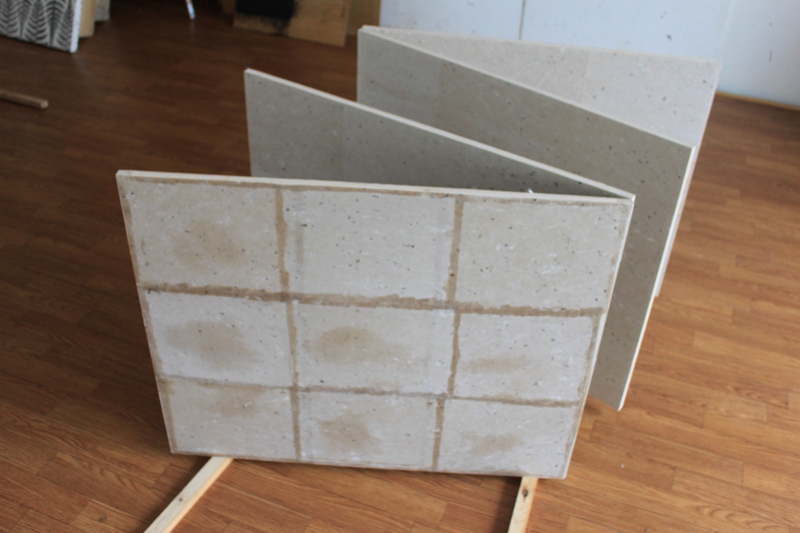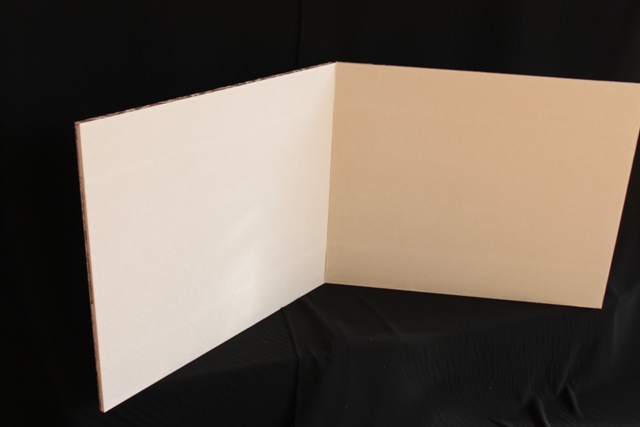Traditional Techniques of Byobu
屏風は古来より、風よけや部屋の間仕切り、また観賞用として用いられてきました。常に環境変化にさらされるため、屏風の材質は劣化しやすい運命にあります。しかし、何百年も以前に描かれた多くの屏風絵が現在もその美しさを維持し続けています。先人達が築いた屏風を仕立てる伝統の技が長期にわたり屏風絵を支えてきました。
From ancient times, folding screens, or byobu, were used indoors as wind screens, partitions or decorations. Because these screens are always exposed to environmental changes, they easily deteriorate. Many masterpieces, however, have survived in good condition for hundreds of years because of the craftsmanship involved in creating byobu.
伝統的な屏風の張り方は、木の格子に特殊な方法で和紙を何層にも張り重ねて、温度や湿度の変化に耐える構造になっています。特に2つの緩衝層が重要な役割を果たしています。一つは、袋張りと呼ばれる行程で作られる層が木と紙の伸縮率の差を補正しています。木と紙は温度や湿度の変化に応じて吸湿・脱湿し伸縮を繰り返しますが、紙は木よりもはるかに伸縮率が大きいので、たるみや引っぱりが生じてしまいます。袋張りで、縁に糊をつけた半紙大の和紙を連続的に重ね合わせる行程を二度繰り返し、たるみや引っぱりを分散させる構造にしています。
Traditional byobu is composed of several layers of strong Japanese paper, or washi, stretched over a wooden lattice frame so as to create a structure that adjusts to changes in temperature and humidity. Of these multiple paper layers, two buffer layers particularly play an important role. One evens out looseness or tension caused by different contraction rates between paper and wood. This layer is created in a process called Fukuro-bari, in which smaller pieces of washi are laid taut on top of each other over the lattice frame so that only their edges are glued to the frame.
もう一つは、蓑掛けと呼ばれる行程で作られる空気の層です。蓑掛けは横長の和紙を下側が浮くようにずらしながら段々になるように張ります。糊の付いていない部分は紙が浮き、空気の層ができることで湿気を出し入れして湿度を調節すると言われます。また、この層はやわらかいふくらみを持たせる効果があります。
The other layer creates air space made in a process called Mino-kake, in which bigger rectangular pieces of washi, with their bottom edges left unglued, are overlaid over the frame, offsetting one from another. The loose edges float, allowing the air space to absorb and release moisture and create a soft appearance.
このように、伝統的な屏風の張り方は、環境変化に耐える強さと見た目の柔らかさの両面を持たせる技法であり、絵の魅力や素材の質感を生かしつつ長期にわたり屏風を保存するために重要な役割を果たしています。
These traditional techniques employed in creating byobu endow it with strength and resilience, while also giving an aesthetically pleasing appearance. The structure and properties of the materials create a special texture that enhances the beauty of painting on byobu, and help maintain it over a long period of time.
(提供:OIST柴田幸子)



